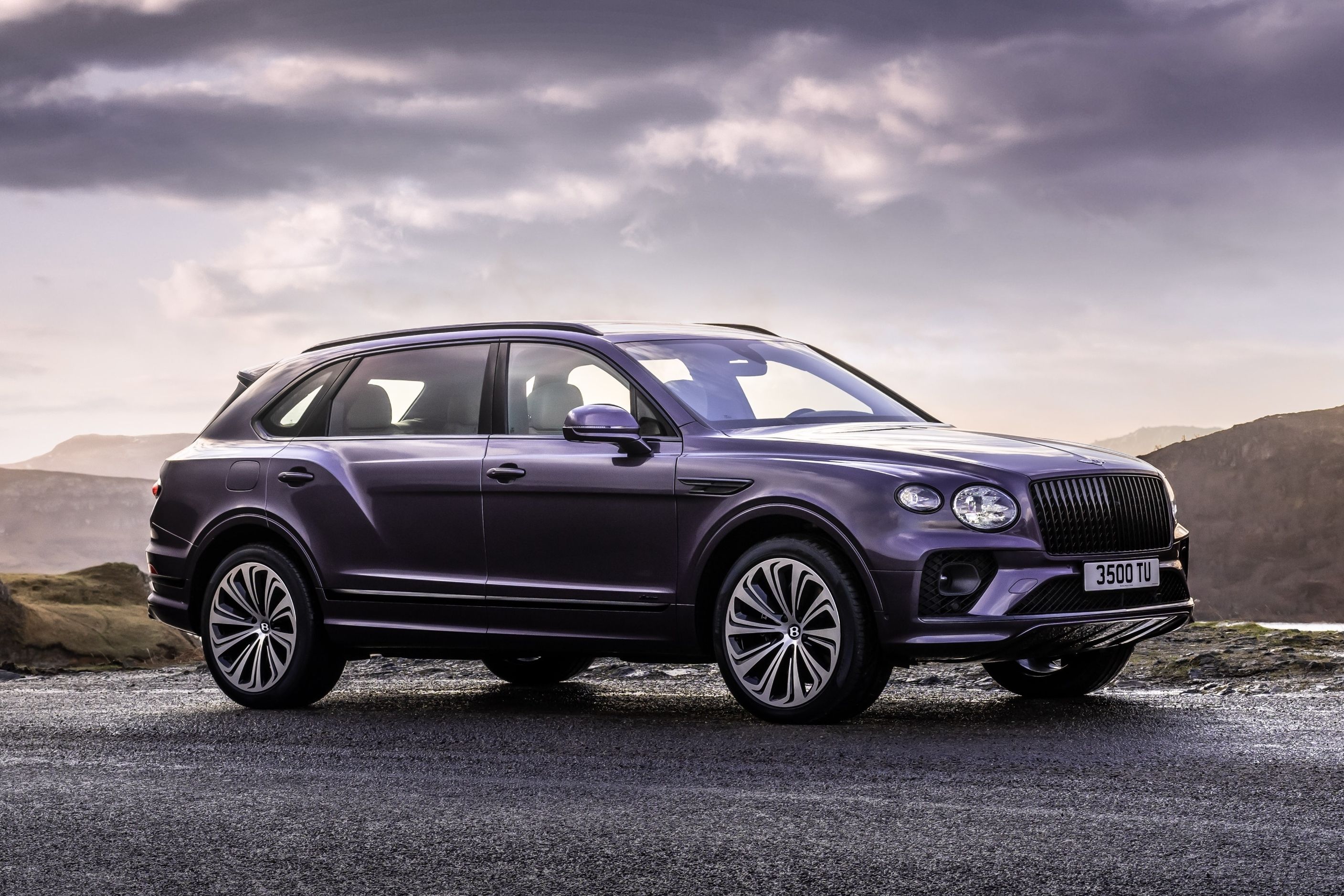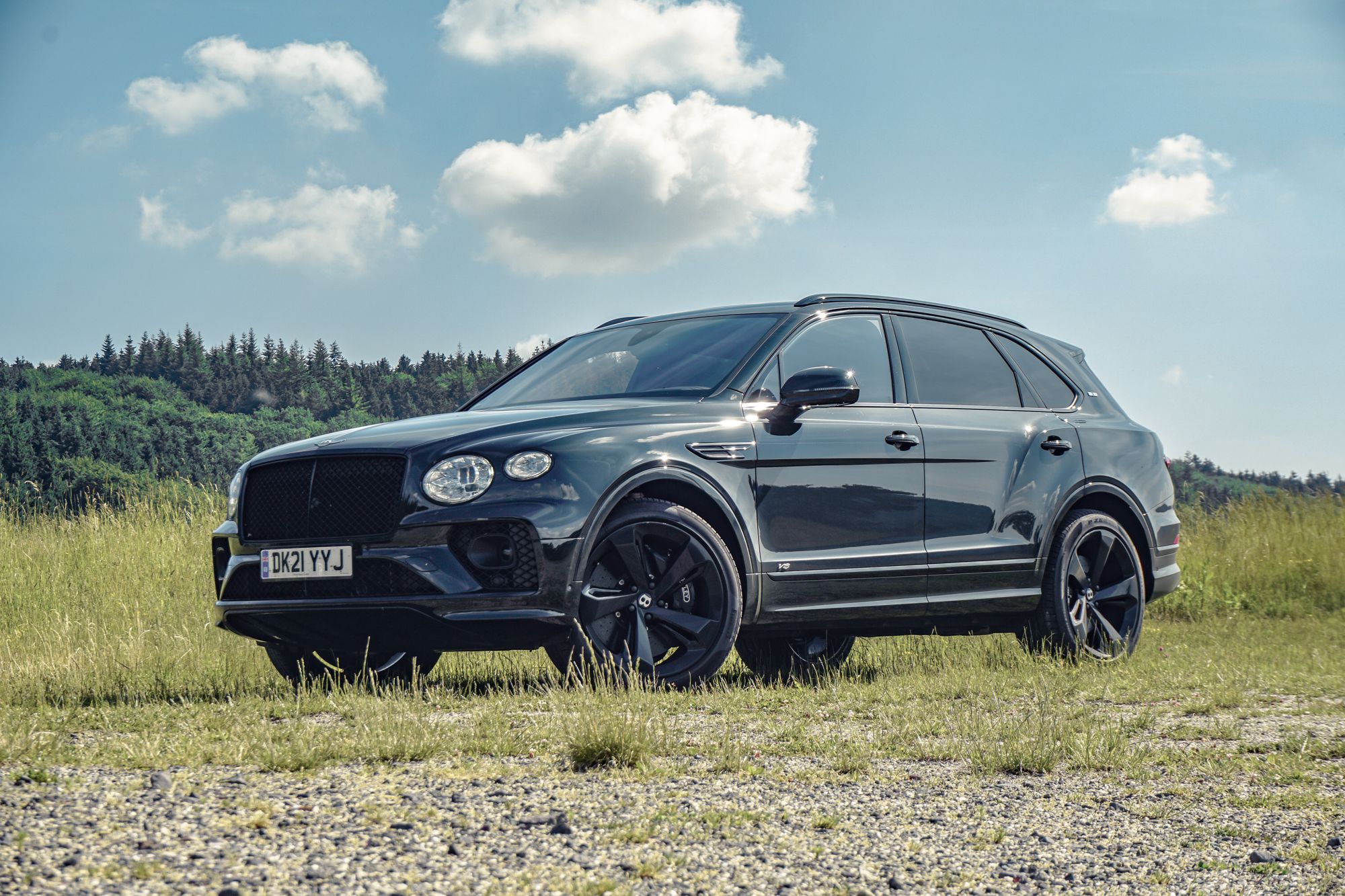
It's easy to put Bentley in a box. Unless you're deep into the hobby or follow the less popular motorsports, it's a luxury car maker. It makes grand touring cars and sumptuous sedans and cushy SUVs. Rappers don't rap about track days in a Bentley, they rap about showing off their bank accounts while cruising in a Continental.
But let's not forget this is the brand of infamous Bentley Boys and the Blower. Founder W.O. had his cars racing at Circuit de la Sarthe in the company's second year. It won Le Mans in two separate centuries and races GT3 cars all over the world today. The company knows how to build a chassis. And we're not just talking about its cars. It's 100 years of technical prowess might be best exemplified by its most popular vehicle, the three-ton Bentley Bentayga.
Scoff at your own peril. We got to push the 543-hp, 568-lb-ft Bentayga V8 harder than usual around Germany on the autobahn and on the Nurburgring-adjacent mountain roads and were frankly blown away by the performance of this luxury behemoth. We wanted to know how exactly this was possible, and went straight to Bentley for the answers.
The first and most obvious question was how Bentley hides all that mass. It turns out the Bentley Dynamic Ride system does most of the heavy lifting, making the car feel lighter and nimbler than it has any right to be.
"This system allows us to reduce the body roll-angle of the vehicle during cornering, which increases the steering response of the car and gives the feeling of a less heavy vehicle as the body is not moving around as much as with conventional anti-roll bars," said Andy Marson, functional manager - vehicle dynamics.
Bentley Dynamic Ride can also change the stiffness of the front and rear axles independently, reacting to speed and lateral acceleration, "which allows our engineers to calibrate the vehicle to have the best front-axle response at any driving scenario," said Marson. And it's the electric dampers that keep the car's vertical movement in check.
We used sport mode liberally during our time with the Bentayga, which was perfect for the rising and running roads outside of the world's most famous racetrack. Flipping that switch affects the Bentley Dynamic Ride system, reducing body roll. The roll-stiffness distribution is also changed to increase front axle grip and response. And it also adjusts the damping "to increase ground-hook body control - so the car feels more connected to the road surface," said Marson.
"The suspension lowers by 15 mm to bring the driver closer to the road and this ride-height change adjusts the suspension kinematics and steering which make the car feel more engaging to drive. The throttle pedal map is modified to be more direct and the transmission calibration is modified to change gear higher in the rev-range, allowing for earlier downshifting."
To make the huge Bentayga perform admirably at the limit, engineers tap into the vehicles multitude of sensors for lateral, longitudinal and vertical acceleration, yaw rate, steering wheel angle, throttle pedal angle, understeer and oversteer. They use that data information to fine-tune the balance between fast and rewarding, and safe and predictable.
"The vehicle dynamics team, together with our colleagues in the stability control team work closely together to fine-tune the handling behavior on many different types of roads and tracks around the world," said Marson. "A small example of the locations we go to tune the chassis are: UK/USA roads for ride comfort, Nurburgring for handling, Ehra-Lessien and autobahn for high-speed, frozen lakes of Sweden for low-grip handling and traction, specialist proving grounds like IDIADA in Spain for wet-handling tuning and alpine roads in Italy."
We spent a good few hours on the autobahn, bringing the Bentayga up near its top speed of 180 mph on multiple occasions, and back down to the speed limit when required. What caught us off guard here was the stability and stiffness at high speeds.
"When talking about global dynamic stiffness, Bentayga is around 15% stiffer than our competitors. When driving at high-speed such as on the autobahn, we increase the electronic damping to help the car feel connected to the road so the driver has good confidence and feedback through the steering and chassis to allow them to drive at high-speed but feel secure," said Marson.
We were in the V8, but the Bentayga also comes in hybrid form making 443 hp from a 3.0-liter turbocharged V6; a 6.0-liter W12 delivering 600 hp; and finally Speed form delivering 626 hp from the same twelve-cylinder engine. Bentley explained that things would change in those variants, but not as much as we expected.
For the W12 and Speed, Bentley engineers have to make up the couple hundred pounds of extra curb weight, right over the nose of the vehicle. It does this by stiffening the front end.
Bentley says the Speed version is even more high strung in sport mode, and that all "active systems are tuned to make the car even more responsive," said Marson. "But in Bentley and Comfort modes, the vehicle performs in a similar way to the standard car so there is no loss of comfort - it's up to the driver to choose what they want depending on how and where they want to drive."
It's the same way for the Hybrid. Bentley has to adjust to the weight of the batteries and hybrid drive, but still keep focused on what the SUV is supposed to do. It's tuned for comfort in more urban settings, but also needs to be stable over long distances.
"While the driving target is slightly different," said Marson, "[the Hybrid] is also developed to drive fast on the autobahn and we use similar methods to the other models to ensure it is very confidence inspiring at high-speed."
So let's be clear, if we were actually going to a track to set a lap time, it wouldn't be in the Bentley Bentayga V8. It would probably be in the company's Continental GT or even the Flying Spur sedan. But, if we were taking a mountainous road trip or a full cross-continent drive, the Bentayga doesn't suffer as big of a fun penalty as you might think. And with those words, we hope W.O. is resting peacefully, knowing the company he founded is keeping his taste for speed, in addition to luxury, intact.

